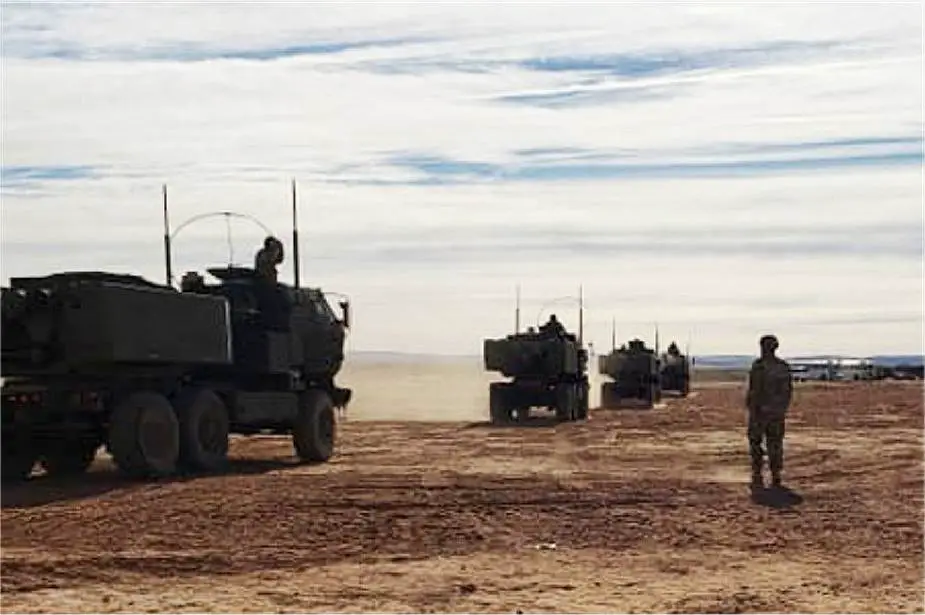According to information published by the United States Department of Defense on January 4, 2022, soldiers from the Wisconsin U.S. Army National Guard’s 1st Battalion, 121st Field Artillery, a mobility artillery unit equipped with HIMARS (High Mobility Artillery Rocket System ) M142 conduct training before deploying to the Middle East in support of Operation Spartan Shield.
Follow Army Recognition on Google News at this link

High-mobility artillery rocket system (HIMARS) launchers from the Colorado Army National Guard move to their next training destination at Fort Bliss, Texas Dec. 16, 2021. Ten Wisconsin Army National Guard Soldiers are deploying overseas with the Colorado National Guard’s 3rd Battalion, 157th Field Artillery in support of Operation Spartan Shield. (Colorado National Guard photo)
The approximately 300 members of the 3rd Battalion, 157th Field Artillery, left Colorado on December 6, 2021, for Fort Bliss for several weeks of pre-deployment training.
The 1st Battalion, 121st Field Artillery is currently part of the 157th Maneuver Enhancement Brigade that is based out of Milwaukee, Wisconsin. Attached to the 1-121st is Battery A located in Hartford, Wisconsin; Battery B located in Plymouth, Wisconsin; 108th Forward Support Company located in Sussex, Wisconsin. The 1-121st FA originally operated M109 howitzer before switching to the M270 Multiple Launch Rocket System (MLRS) in 2003. As of 2010 the 1-121st FA operates the M142 High Mobility Artillery Rocket System (HIMARS).
The M142 High Mobility Artillery Rocket System (HIMARS) is a combat-proven wheeled artillery system that is rapidly deployable via C-130 military transport aircraft and operable in all weather and visibility conditions. The rocket launcher system is mounted on a five-ton modified Family of Medium Tactical Vehicles (FMTV) chassis.
The M142 HIMARS provides responsive, highly accurate, and extremely lethal surface-to-surface rocket and missiles fires from 15 to 300 km. It can fire all munitions in the current planned suite of the MLRS Family of Munitions (MFOM), including army Tactical Missile System (ATACMS) missiles and Guided MLRS (GMLRS) rockets. The vehicle carries either six rockets or one missile, is self-loading and self-locating, and is operated by a crew of three soldiers.
For this mission, the U.S. Army 121st Field Artillery essentially cut a standard four-launcher platoon in half, adding maintenance, communications and medical support personnel to the two-launcher force package. This made it easier to disperse rocket artillery support across the U.S. Central Command area of operations.
1st Lt. Ryan Hommen, Battery A’s executive officer, is the officer in charge of the 10-person detachment, which also consists of three launcher section chiefs, three launcher crew members, two fire direction control team members, and one maintenance Soldier.
Operation Spartan Shield bolsters the U.S. Central Command’s strategic goals to counter, protect, defend and prepare, while at the same time building partner capacity in the Middle East. This deployment has been described as essential in demonstrating U.S. commitment to the security and stability of the nation’s partners in the Middle East and Central Asia.















